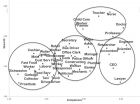(Press-News.org) Premature infants, especially those born with very low-birth-weight (VLBW), are particularly vulnerable to cytomegalovirus (CMV) infection because of their immature immune systems. CMV infection can cause serious disease and, in severe cases, lead to death.
Two important potential sources of CMV infection in premature infants are blood transfusions and breast milk. Neither source has previously been systematically examined in a large enough study, however, to quantify the specific risks of infection and identify risk factors to help guide prevention strategies.
In a new study published in JAMA Pediatrics, researchers have confirmed that the common strategy of transfusing blood products to VLBW infants that are CMV-seronegative and leukoreduced (blood products with white blood cells removed) effectively prevents transmission of CMV from blood transfusion. Using this transfusion approach, maternal breast milk becomes the primary source of postnatal CMV infection among VLBW infants.
The prospective clinical study enrolled 462 mothers and 539 VLBW infants in three neonatal intensive care units between January 2010 and June 2013. A majority of mothers had a history of CMV infection prior to delivery (CMV sero-prevalence of 76.2 percent). The infants were enrolled within five days of birth, and at the time of enrollment they had not received a blood transfusion. The infants were tested at birth to evaluate for congenital infection, and again at five additional intervals between birth and 90 days, discharge, or death.
A total of 29 out of the 539 enrolled infants were found to have CMV infection (cumulative incidence of 6.9 percent at 12 weeks). Five infants with CMV infection developed severe disease or died. Although 2,061 transfusions were administered to 310 of the infants (57.5 percent), the blood products were CMV-seronegative and leukoreduced, and none of the CMV infections was linked to transfusion.
Twenty-seven of 28 infections acquired after birth occurred among infants fed CMV-positive breast milk. The authors estimate that between 1 in 5 and 1 in 10 VLBW infants who are fed CMV positive breast milk from mothers with a history of CMV infection will develop postnatal CMV infection.
"We believe our study is the largest evaluation of both blood transfusion and breast-milk sources of postnatal CMV infection in VLBW infants," says first author Cassandra Josephson, MD, from the Center for Transfusion and Cellular Therapies, Department of Pathology and Laboratory Medicine, Emory University School of Medicine and Children's Healthcare of Atlanta.
"Previously, the risk of CMV infection from blood transfusion of seronegative or leukoreduced transfusions was estimated to be 1 to 3 percent. We showed that using blood components that are both CMV-seronegative and leukoreduced, we can effectively prevent the transfusion-transmission of CMV. Therefore, we believe that this is the safest approach to reduce the risk of CMV infection when giving transfusions to VLBW infants.
The American Academy of Pediatrics currently states that the value of routinely feeding breast milk from CMV seropositive mothers to preterm infants outweighs the risks of clinical disease from CMV. Although breast milk is the best source of nutrition for preterm infants, the authors note that new strategies to prevent breast milk transmission of CMV are needed because freezing and thawing breast milk did not completely prevent transmission in the current study.
Alternative approaches to prevent breast milk transmission of CMV, say the authors, could include routine CMV-serologic testing of pregnant mothers to enable counseling regarding the risk of infection; closer surveillance of infants with CMV-positive mothers; and pasteurization of breast milk until a corrected gestational age of 34 weeks (as recommended by the Austrian Society of Pediatrics). Although most infants who develop CMV infection are asymptomatic in the neonatal period, a minority progress to develop serious symptoms. Routine screening for postnatal CMV infection may be one potential strategy to help identify these infants before they go on to develop symptomatic disease.
The authors note that although the effect of asymptomatic postnatal CMV infection on long-term neurodevelopmental outcomes is not clear, the frequency of CMV infection in this study raises significant concern about the potential consequences of CMV infection among VLBW infants and points to the need for large, long-term follow-up studies of neurological outcomes in infants with postnatal CMV infection.
INFORMATION:
Other study authors included John Roback, MD, PhD, Angela Caliendo, MD, PhD, Kirk Easley, MapStat, Andrea Knezevic, MS, Neeta Shenvi, MS, and Ravi Patel, MD, MSc from Emory University; Christopher Hillyer, MD, from New York Blood Center; and Michael Hinkes, MD, from Northside Hospital, Atlanta.
Maternal breast milk is risk factor for cytomegalovirus transmission in premature infants
2014-09-22
ELSE PRESS RELEASES FROM THIS DATE:
Hardwiring AHA guidelines into order system reduced telemetry orders
2014-09-22
Bottom Line: A health care system reduced its use of telemetry (monitoring to detect irregular heartbeats) by 70 percent by integrating the American Heart Association's (AHA's) guidelines into its electronic ordering system.
Author: Robert Dressler, M.D., M.B.A., of the Christiana Care Health System, Newark, Del., and colleagues.
Background: The AHA recommendations for non-intensive care unit (non-ICU) cardiac telemetry divide patients into three groups: cardiac telemetry is indicated, it may provide benefit or it is unlikely to provide benefit. Non-ICU telemetry appeared ...
Discount generic drug programs grow over time
2014-09-22
Generic discount drug programs (GDDPs, which charge nominal fees to fill prescriptions) have grown over time and their initial lower use by racial/ethnic minorities has evaporated., writes author Song Hee Hong, Ph.D., of the University of Tennessee Health Science Center, Memphis, and Sunghee H. Tak, Ph.D., M.P.H., R.N., of the University of Memphis, Tennessee.
GDDPS can reduce medication costs and help patients get their drug therapy. However, the initial use of GDDPs was low in 2007 at 3.6 percent of patients receiving any prescription drugs, especially among minorities. ...
Few kids receive psychotherapy along with medication for ADHD, study finds
2014-09-22
About one quarter of commercially-insured children who are treated with medication for attention-deficit/hyperactivity disorder also receive psychotherapy, and the percentage is far lower in many parts of the country, according to a new RAND Corporation study.
Published as a research letter in the Sept. 22 edition of JAMA Pediatrics, the study is the first to document the substantial variation in receipt of talk therapy among U.S. children treated with ADHD medication, varying more than six-fold across counties in the United States.
For many children with attention-deficit/hyperactivity ...
Research study analyzes the best exercise for obese youths
2014-09-22
What exercise program can best fight the "epidemic" of teen obesity? According to a study published in the Journal of the American Medical Association (JAMA) Pediatrics, by combining aerobic exercise with resistance training.
The Healthy Eating Aerobic and Resistance Training in Youth (HEARTY) study, led by researchers at the University of Calgary and University of Ottawa, involved 304 overweight teens in the Ottawa/Gatineau area between the ages of 14 to 18. All were given the same four weeks of diet counseling to promote healthy eating and weight loss before being ...
Think the system for paying US doctors is rigged to favor surgeons? Study may surprise you
2014-09-22
ANN ARBOR, Mich. — A surprising new study pulls back the curtain on one of the most contentious issues in health care: differences in payment and income between physicians who perform operations, procedures or tests, and those who don't.
Contrary to perception, the research indicates, the physician payment system is not inherently "rigged" to favor surgeons and other procedure-performing doctors.
The new findings counter the widely held belief that a simple difference in pay per minute explains why doctors who perform procedures often earn nearly twice as much money ...
Scientists seen as competent but not trusted by Americans
2014-09-22
PRINCETON, N.J.—If scientists want the public to trust their research suggestions, they may want to appear a bit "warmer," according to a new review published by Princeton University's Woodrow Wilson School of Public and International Affairs.
The review, published in the Proceedings of the National Academy of Sciences (PNAS), shows that while Americans view scientists as competent, they are not entirely trusted. This may be because they are not perceived to be friendly or warm.
In particular, Americans seem wary of researchers seeking grant funding and do not trust ...
We drink more alcohol on gym days
2014-09-22
Thursdays to Sundays are when people both exercise more and drink more
Study used smartphones to record daily alcohol intake and physical activity
Findings differ from past research on physical activity and exercise
CHICAGO --- A new Northwestern Medicine® study finds that on days when people exercise more -- typically Thursdays to Sundays -- they drink more alcohol, too.
This is the only study to use smartphone technology and a daily diary approach for self-reporting physical activity and alcohol use.
"Monday through Wednesday people batten down the hatches ...
The fine line between breast cancer and normal tissues
2014-09-22
Boston, MA – Up to 40 percent of patients undergoing breast cancer surgery require additional operations because surgeons may fail to remove all the cancerous tissue in the initial operation. However, researchers at Brigham and Women's Hospital (BWH) have successfully tested a tool they developed that will help surgeons better distinguish cancerous breast tissue from normal tissue, thereby decreasing the chances for repeat operations.
The study is published online the week of September 22, 2014 in the Proceedings of the National Academy of Sciences.
The tool, known ...
Plant variants point the way to improved biofuel production
2014-09-22
Manufacturing biofuels from food crop by-products such as straw could be made quicker and cheaper thanks to the work of scientists in the UK and France.
Researchers funded by the Biotechnology and Biological Sciences Research Council (BBSRC) have discovered variant straw plants whose cell walls are more easily broken down to make biofuels, but which are not significantly smaller or weaker than regular plants.
The discovery could help ease pressure on global food security as biofuels from non-food crops become easier and cheaper to make.
The impact of carbon emissions ...
Study: Antifreeze proteins in Antarctic fishes prevent freezing…and melting
2014-09-22
CHAMPAIGN, Ill. — Antarctic fishes that manufacture their own "antifreeze" proteins to survive in the icy Southern Ocean also suffer an unfortunate side effect, researchers report: The protein-bound ice crystals that accumulate inside their bodies resist melting even when temperatures warm.
The finding is reported in the Proceedings of the National Academy of Sciences.
"We discovered what appears to be an undesirable consequence of the evolution of antifreeze proteins in Antarctic notothenioid fishes," said University of Oregon doctoral student Paul Cziko, who led ...

